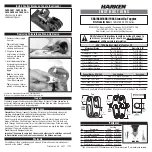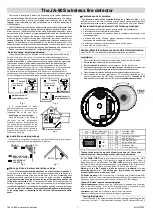
7
EN
Assess and document wound dimension.
– Cut the foam to fit the size and shape of the wound.
– Place the foam into the wound cavity. Foam should fill the wound cavity without overlapping
onto intact skin.
– If required, a non-adherent layer may be applied to the wound prior to placing the foam into
the wound bed.
Step 1 – Apply the foam
WARNINGS
– Foam should be cut to fit loosely into the wound bed. Do not tightly pack or force foam into any areas of the
wound.
– Do not cut the foam directly over the wound bed to avoid foam fragments from falling into the wound. Rub the
edges of the foam to remove any loose fragments after
cutting.
– If multiple pieces of foam are needed to cover the wound bed, count and record how many foam pieces have
been used.
– If a tunnel exists, cut the foam longer than the tunnel to ensure that contact is made with the foam in the primary
wound bed/cavity. If using foam in a tunnel ensure it is wrapped in a non-adherent layer to prevent any breakage
at removal.
– Do not place foam into blind or unexplored tunnels
.
– Ischemia to the incision or the incision area
– Untreated or inadequately treated infection
– Inadequate hemostasis of the incision
– Cellulitis of the incision area
Dressing application for wound management
Wound preparation
Remove and discard previous dressing per local protocol. Please refer to Dressing Removal section for more details..
WARNING
Inspect the wound thoroughly to ensure that all pieces of dressing components have been removed.
–
Thoroughly clean and debride the wound as instructed by a physician.
– Protect the periwound skin from exposure to moisture and adhesive.
Dressing application
To be performed by healthcare professional only.
Do not use if sterile package is damaged or opened prior to use.
When applying Invia Foam Dressing Kit with FitPad, use clean/aseptic or sterile techniques per local protocol.








































